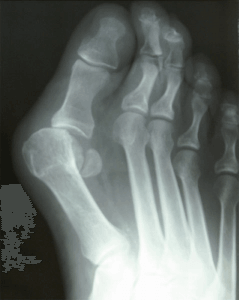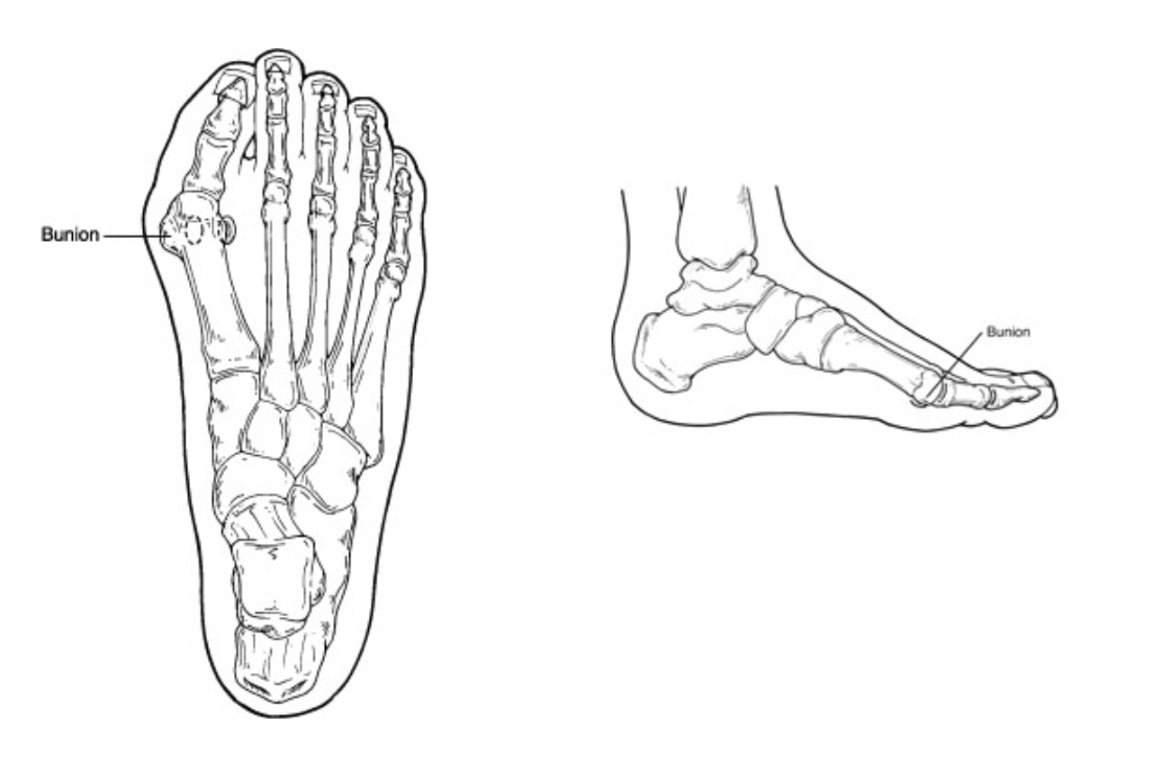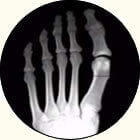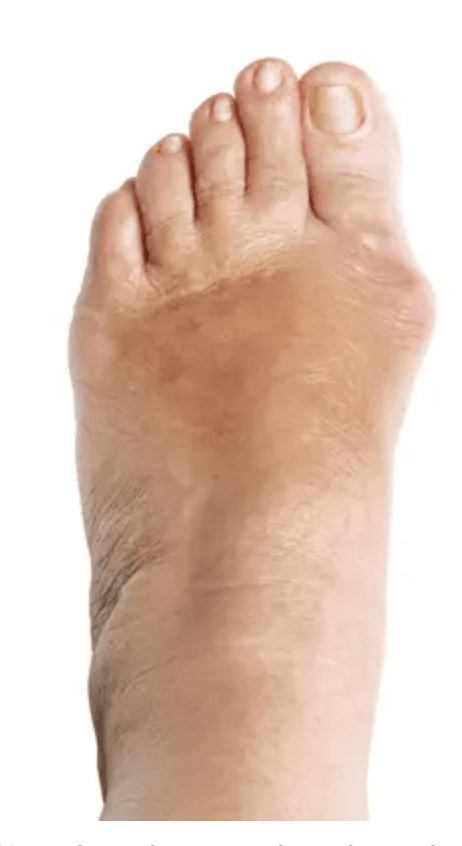bunion issaquah
Displaying items by tag: bunion issaquah
Dr Brandon Nelson, A Board-Certified Physician & Surgeon Discusses Why You Should Have The Lapiplasty Bunionectomy Procedure

Bunions can make life difficult. They can get in the way of exercising and other activities that we enjoy. They can make shoe choices impossible and cause pain daily. This often leads to patients needing surgical intervention to remove the bunion. The Lapiplasty is revolutionizing bunion surgery and creating great outcomes for patients that need to have their bunion removed.
I encourage anybody that is deciding to have their bunion removed to see a surgeon that has experience with Lapiplasty. I have been operating on bunions for over 15 years and have seen the evolution of bunion surgery. I have seen minimally invasive surgery trends; I have seen open surgery trends and now over the last 5 years have seen Lapiplasty move to the forefront. Lapiplasty is different from other bunion surgeries in many ways.
The Lapiplasty addressed the root cause of a bunion. Bunions are created when we have an unstable foot and joint. The Lapiplasty works at the apex of the bunion deformity and at the same addresses the mechanical instability of the foot. It has proven to have great long term outcomes and will soon be the most common bunion surgery correction technique.
If you would like a consultation on your bunion I can help. Call to make an appointment with me at 425-391-8666 or contact us online.
Sincerely,
American College of Foot & Ankle Surgeons
Dr Brandon Nelson, A Board Certified Physician & Surgeon, Discusses Why the Lapiplasty Procedure for Bunion Surgery Is His Preferred Method

Bunion surgery has been around for over 100 years. There are many techniques that have been utilized for correction of a bunion. The majority involve cutting a bone and realigning a joint. The goal of these surgeries are to straighten the 1st metatarsal and eliminate the deviation of the bone. Today with new research and modern technology we have a better understanding of function anatomy and have begun to look at bunion surgery outcomes. This has led the majority of us surgeons to utilizing the Lapiplasty technique for better long term outcomes.
I personally have been a Lapidus surgeon for over 15 years. I trained in the Northwest and have had the opportunity to work with some of the pioneers of bunion surgery. We have seen through research that the Lapidus procedure holds up the best over time. The long term outcomes show very little recurrence and better overall patient happiness. The lapiplasty system has allowed us to take the lapidus bunion procedure and make it more reproducible.
Lapiplasty is a system created by Treace Medical that has taken some of the technically challenging parts of the lapidus bunionectomy and simplified them. It has a system of cutting jigs and guides that make it simple to correct the bunion. I find patients are extremely happy and have seen incredible long term results. If you have a bunion schedule and appointment with me, I can help you review your options. Give us a call at 425-391-8666 or make an appointment online today.
Sincerely,
Dr Timothy Young Discusses What to Expect After Lapiplasty Bunion Surgery: Road to Recovery
.jpg)
Dr Timothy Young Discusses What to Expect After Lapiplasty Bunion Surgery: Road to Recovery
Introduction
Bunions, those painful bony bumps that form at the base of the big toe, can be incredibly uncomfortable and limit your mobility. For those who have chosen to undergo bunion surgery to alleviate the pain and discomfort, it's important to be well-prepared for what comes next. In this blog, we'll discuss what to expect after bunion surgery including Lapiplasty bunion surgery and provide insights into the recovery process to help you make the journey as smooth as possible.
Day of Surgery
1. Arrival at the Surgery Center: On the day of your surgery, you'll arrive at the surgery center, where you will be prepped for the procedure. The medical team will ensure you're comfortable and informed about the process.
Anesthesia: Bunion surgery is typically performed under local anesthesia with sedation. You'll discuss this with your surgeon before the procedure.
The Surgical Procedure: The surgery usually takes approximately 2 hours, depending on the complexity. The surgeon will make incisions, remove the bunion, and realign the toe joint. With the Lapiplasty procedure there will be 2 plates. With some the other Lapidus procedures there may be 2 or possibly 3 screws.
Recovery Timeline
1. Post-Operative Recovery Room: After the surgery, you'll spend some time in the recovery, where the medical staff will monitor your vital signs and ensure you're comfortable.
Returning Home: Most patients return home on the same day of surgery.
The First Weeks After Surgery
1. Pain Management: Expect some pain and discomfort, which is normal after bunion surgery. Your surgeon will prescribe pain medication to help manage this. Follow their instructions carefully.
Swelling and Bruising: Swelling and bruising are common. You can use ice packs and elevate your foot to reduce swelling.
Dressings and Bandages: You will have a dressing on your foot to protect the incision. Keep it clean and dry. Your surgeon will give you instructions on when to change the dressings.
2. Weight-bearing timeline. This varies from patient to patient.
First 2 weeks with the Lapiplasty typically you are using a scooter or crutches and keeping weight off.
Week number 3 – 6 you progressively bear weight with your boot.
If you are experiencing foot or ankle pain, give us a call today at 425-391-8666 or make an appointment online.
Dr Brandon Nelson, A Board-Certified Physician & Surgeon Discusses Bunions and When To Fix Them

Bunions are an inherited foot deformity that is made worse with time and shoe gear. The size of a bunion increases as a person puts more mileage on their feet. It is the natural progression of a bunion to get larger and eventually become painful or make it difficult to fit shoes. I encourage anybody with a bunion to get evaluated early as there are tools to slow the progression of a bunion. But let’s focus on when you should think about having your bunion fixed.
Bunion surgery has really changed in the last couple years and more people than ever are having their bunions fixed. This is because research and techniques have advanced. We have seen a shift to correcting bunions at the apex or center of rotation where they occur. The most prevalent procedure is making a shift towards the Lapiplasty. I personally have been using this procedure for years and find it has the best long-term outcomes. So that leads us to when is the right time to fix a bunion.
I like to focus on the foot as an entire unit as the primary driver of when to fix a bunion. If you look down at your foot when you unload it or take it off the ground what does the big toe position look like? Is it crossing over or under the second digit? If it is, you are ready to have your bunion fixed. I advise my patients to have it fixed before this occurs. If you catch the bunion early and have the foot stabilized with bunion surgery before it crosses over the second toe that is even better. If you wait for the second toe to get involved, you will often need to have that toe operated on as well.
If you have a bunion I can help, call to make an appointment with me at 425-391-8666 or schedule an appointment online today.
Sincerely,
American College of Foot & Ankle SurgeonsDr Brandon Nelson, A Board-Certified Physician & Surgeon Discusses Why You Should Have the Lapiplasty Procedure to Fix Your Bunion

Bunion surgery has been around for more than 100 years. It is one of the most common surgeries performed in the United States. Over 100,000 are done annually and the majority are on women. In recent years new advancements have been made to speed recovery and success of the operation.
The Lapiplasty system by Treace Medical is at the forefront of bunion repair. This system has taken years to develop and has undergone evolution as it has been utilized. It has now proven to be one of the work horses of bunion surgery. It provides reproducible results and long-term correction. It has an ease of use that makes the surgical procedure faster and improves recovery. This has changed bunion surgery for patients and surgeons. The Lapiplasty system is based on a long-standing surgical technique.
This long-standing technique was first described around the turn of the century by Paul Lapidus. He advocated that the bunion started from the tarsometatarsal joint, and correction needed to occur there. Since his original thought we have only worked to improve and support this theory in the surgical community. It has been shown this is the center of most bunions and the correction is best done here. If you have a bunion the time has never been better to have it fixed.
Lapiplasty is by far the most successful bunion surgery technique I have seen. If you are experiencing bunion pain, I can help call to make an appointment with me at 425-391-8666.
Sincerely,
American College of Foot & Ankle Surgeons
Dr. Brandon Nelson, A Board-Certified Physician & Surgeon Discusses How The Lapiplasty Can Fix Your Bunion

Bunions are one of the most painful foot conditions for patients that are active and can be extremely challenging for shoe gear. This is related to the fact that the forefoot begins to widen, and the 1st metatarsal phalangeal joint can become dislocated. If you are experiencing these issues, it could be time to consider fixing the problem permanently.
Bunion surgery techniques have changed dramatically over the last 5 years. This is primarily due to the advent of Lapiplasty. Historically the Lapidus bunion procedure has had an outstanding result. However, the limiting factor was recovering times. The new Lapiplasty system has changed this and improved outcomes and decreased recovery times. This has led me to change my technique to take advantage of this newer system to help my patients.
My patients have been extremely happy with the newer system. They have seen the normal recovery time cut in half. I used to see patients get into normal shoes at about 3 months and now this is around 6 weeks. If you want a quicker return to normal shoes, come, see me and we can evaluate whether you are a candidate for lapiplasty. I truly believe the best long-term results can be achieved and this is correlated with better stability of the foot. Bunion surgery has never been easier!
If you are experiencing bunion pain, I can help call to make an appointment with me at 425-391-8666 or fill out a contact form online.
Sincerely,Dr Brandon Nelson
American College of Foot & Ankle Surgeons
Dr Brandon Nelson, A Board Certified Physician & Surgeon, and the Lapiplasty Procedure for Bunion Correction

Today we find ourselves in a new era of healthcare. We have robots and small cameras and new instruments to utilize to improve outcomes and simplify procedures. When I completed residency 15 years ago we were introduced to these new devices. It has been interesting to see the evolution of these tools and new and exciting tools enter healthcare. One of the most advanced instrument sets I have seen is the Lapiplasty system by Treace Medical. This has revolutionized bunion surgery and made the surgeons part much easier and more reproducible.
The lapiplasty system is based on the lapidus procedure that was first described by Paul Lapidus almost 100 years ago. This procedure has been utilized in the Pacific Northwest for years. When I began my training the lapidus procedure for bunion correction was very popular as it provided great outcomes with low recurrence rates. The new lapiplasty system is based on the original surgical procedure but has tools that make the surgery easier to execute and recovery faster for patients.
The advantages of patients are numerous and I will discuss a few. First off any surgery should be reproducible. The jig and cutting system of the Lapiplasty has taken away the variability among surgeons and removed eyeballing of bone cuts. This makes for better long term outcomes and reliable positioning of bones for correction of bunions. Secondly it provides better fixation that allows faster recovery. Traditionally the Lapidus procedure can take quite a long time to transition to weight bearing and a normal shoe. This is a big advantage for the new Lapiplasty and one of my most favorite parts of the system.
If you have a bunion and would like to discuss Lapiplasty make an appointment with me today. Give us a call at 425-391-8666 or make an appointment online today.
Sincerely,
Dr. Brandon Nelson
Dr Brandon Nelson, A Board-Certified Physician & Surgeon Discusses Key Steps in the Lapiplasty Bunion Procedure

Bunion surgery has been performed for years and many different types of surgical techniques exist. The last few years a newer procedure called the Lapiplasty has been pushed to the forefront of surgical correction. It involves previously researched correction techniques combined with a newer jig for bone cuts. It is the fastest growing bunion surgery in the United States. There are a few key steps that make a difference in the correction that must be carefully followed.
The first key step is freeing up the joint so it can be rotated in 3 different planes to correct the triplane bunion deformity.
The second involves making sure to release and mobilize soft tissue around the big toe.
Next provisional reduction needs to be done and fixated with a clamp to apply the cutting jig. Once the correction is obtained the jig is placed and the bone is cut.
The wedges of bone are removed, and the joint is fenestrated to promote fusion and graft can be placed.
The joint is then compressed, and correction again obtained, and fixation occurs with plates and screws.
The advantages of this system are reproducibility and stable fixation which allows earlier weight bearing.
If you have a bunion and are in pain, I can help. Make an appointment with me today at 425-391-8666 or fill out a contact form online.
Dr Brandon Nelson
Issaquah Foot and Ankle Specialists
Dr Brandon Nelson, A Board-Certified Physician & Surgeon Discusses The Austin Bunionectomy

Bunions are primarily an inherited foot structure issue. These often begin to develop in early adolescents and progressively get bigger as time goes on. They develop as one’s foot becomes increasingly unstable through the medial. The bunion itself seems to grow as the first metatarsal shifts outwards and the big toe begins to drift into the adjacent digits. This shift will continue until it is treated and will get larger as time and milage gets greater.
There are many different ideas about the treatment of a bunion. There are conservative and surgical options available. It is important to note that conservative options do not correct the bunion or stop it from getting larger. This can only be accomplished surgically.
Surgery for a bunion is most used for long term correction. Meaning realigning the bone for the foot to function in a stabilized fashion. Many bunion surgeries are what is called a head procedure. This is when the metatarsal head is cut and pinned or screwed in place. The procedure itself is straight forward and can usually be done in under an hour. The average person will be walking the entire post operative phase and can be in a normal shoe in 4-6 weeks typically.
If you have a bunion and are in pain, I can help. Make an appointment with me today at 425-391-8666 or submit a contact form online and our team will reach out as soon as possible.
Sincerely,
Dr Brandon Nelson
American College of Foot & Ankle Surgeons
Dr Timothy Young, a board certified foot surgeon talks about Reversing a Bunion: Understanding the Causes, Treatment Options, and Prevention

Dr Timothy Young, a board certified foot surgeon talks about Reversing a Bunion: Understanding the Causes, Treatment Options, and Prevention Part 1
Introduction:
Bunions are a common condition that can cause foot discomfort, pain, and limit mobility. Bunions are typically associated with a bony protrusion at the base of the big toe, and they are actually the result of a complex structural deformity in the foot. We will review the causes of bunions, explore the available treatment options, and discuss preventive measures that can help reverse this condition.
Understanding Bunions:
Bunions, are also known as hallux valgus. This condition occurs when the joint at the base of the big toe becomes misaligned. The misalignment causes the big toe to angle inward, towards the other toes, leading to the formation of a bony bump on the side of the foot. Bunions can be hereditary, but they are often aggravated by certain factors, including:
a. Footwear: Tight, pointed shoes that squeeze the toes together can contribute to the formation of bunions.
b. Foot structure: Certain foot types, such as very pronated flat feet with low arches, are more prone to develop bunions.
c. Arthritis: Certain forms of arthritis can increase the risk of developing bunions. And conversely, bunions can lead to abnormal joint wear with potential for arthritis.
Treatment Options:
While bunions are generally progressive and often worsen over time, there are several treatment options available to address the symptoms and reverse the condition:
Wearing good footwear: look for wide-toe shoes with a low heel and nice arch support can reduce discomfort.
Orthotic devices: prescription custom-made shoe inserts (orthotics) can help stabilize the foot and reduce further progression of the bunion.
Padding and taping: Using padding or taping around the bunion that will provide cushioning and reduce pain.
*If you are experiencing foot or ankle pain, give us a call at 425-391-8666 or make an appointment online today.



